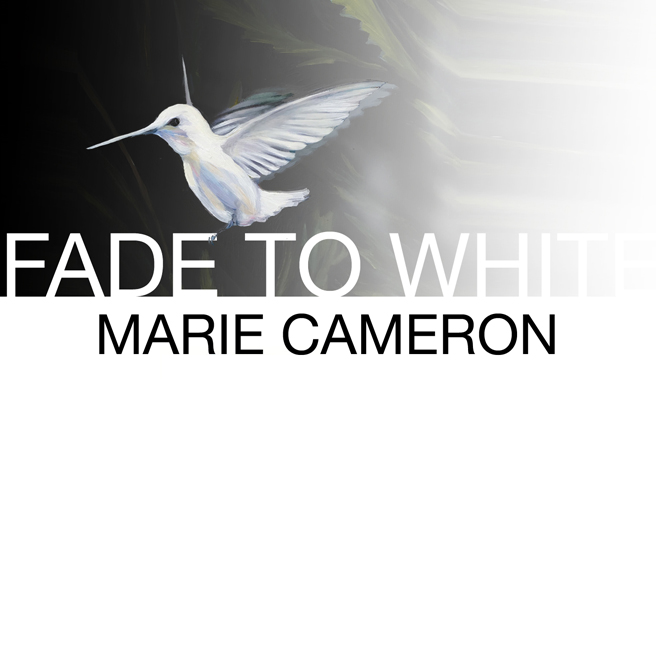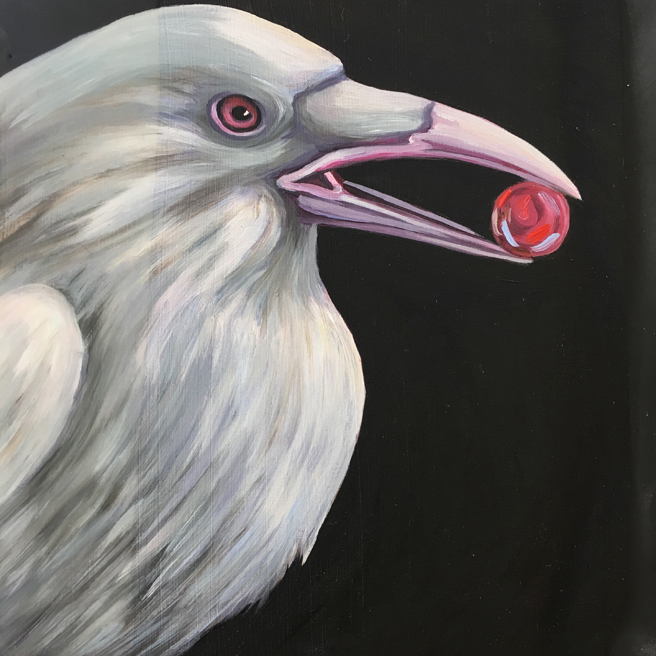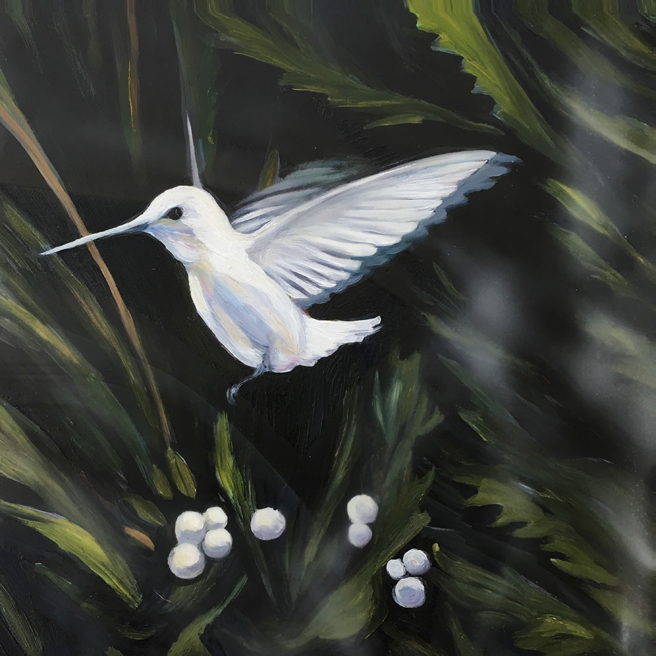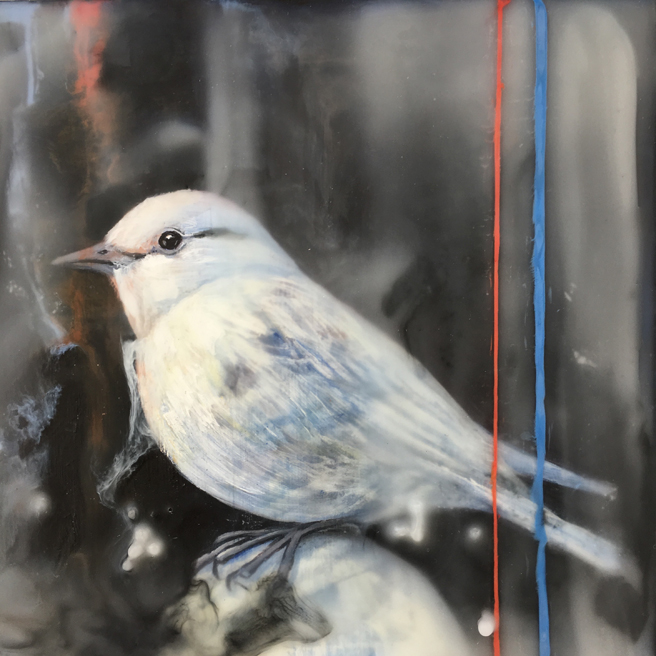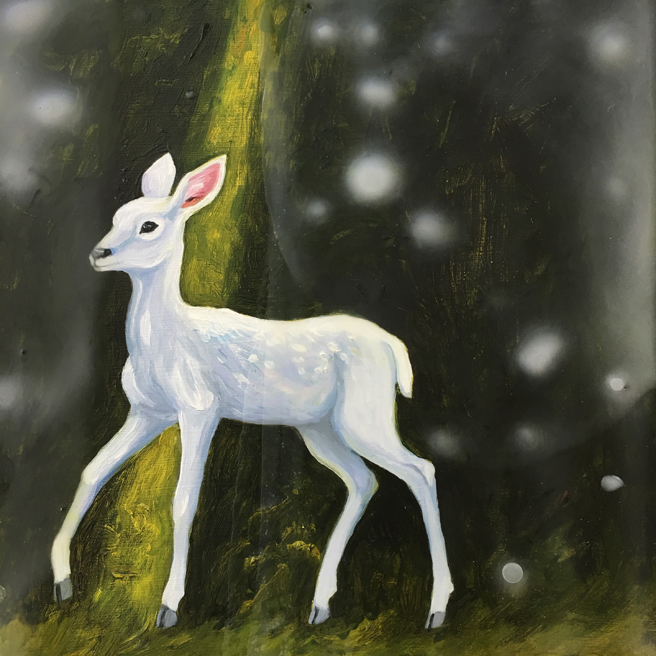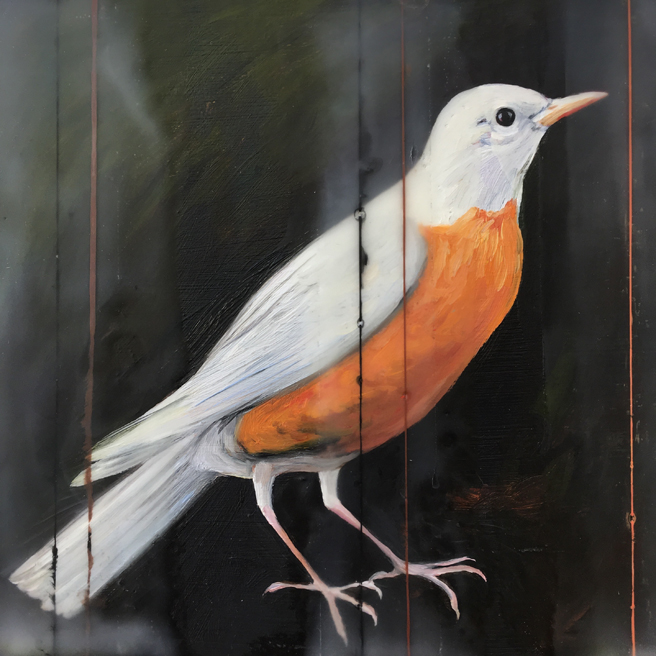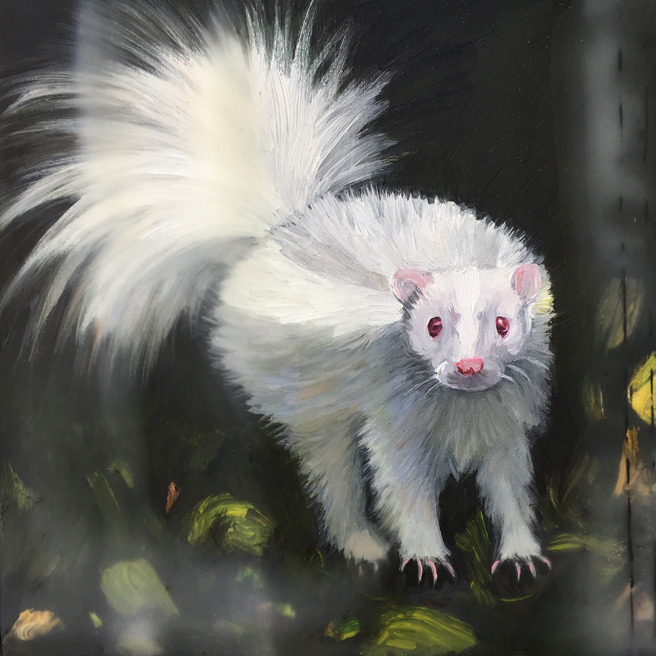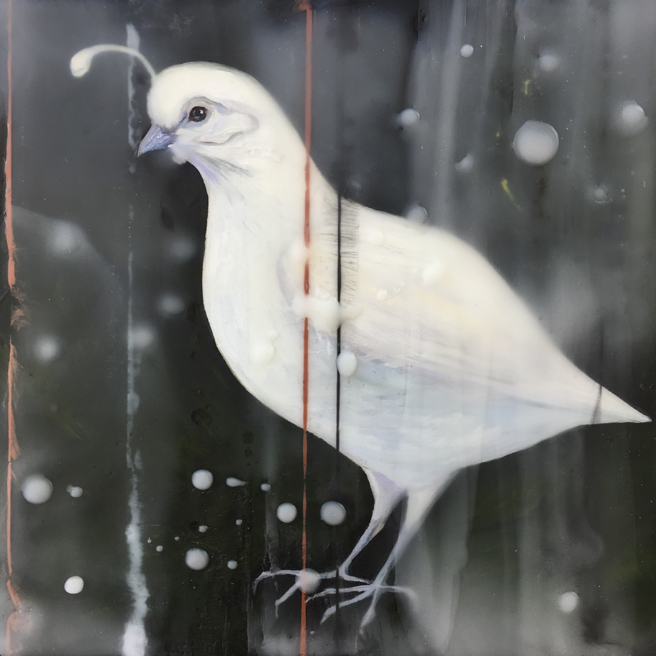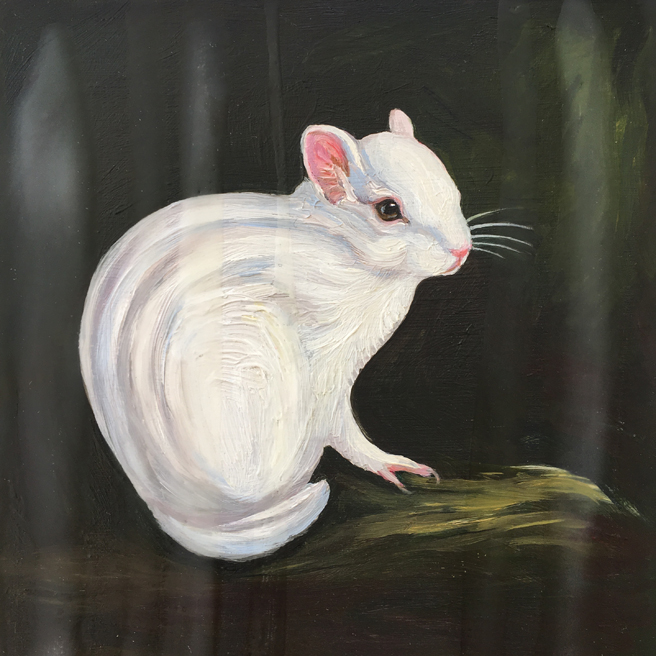I’ve been fooling around with some square business cards for Sanchez 50 I 50, you know the kind with a new image on each one…this will be the back with my contact info and painting care instructions.
I often live in my head about what I’m doing, and it was pointed out that by an artist friend (thank you Andy Ballantyne) that I should share the meaning behind my Fade to White series since they are more than purely decorative.
Here’s the Artist Statement I’ve prepared for the show:
It’s so magical to see a ghostly white apparition in the forrest!
I was overwhelmed the first time I saw an albino deer years ago at Pine Mountain Lake in Groveland and thrilled to witness a leucistic hummingbird at the UC Santa Cruz Arboretum a year ago! I am intrigued by the increasingly frequent reports of albinism and leucism in our native flora and fauna.
Very rare in the wild, these white creatures stand out from their surroundings making it hard for them to be a predator and harder still to be prey. These genetic conditions carry other risks as well, including sensitivity to sunlight with a higher risk of skin cancer and weakened feathers in birds. Finding mates can also be more challenging. Plants without the chlorophyl fail to thrive and need to be associated with a green parent plant to grow. Interestingly, the case of albino redwoods, there is evidence that the albino shoots are actually processing toxins in the soil.
With the expansion of human development, real wild spaces are shrinking and becoming disconnected, creating isolated gene pools which heighten the opportunities for recessive albinism and leucism to express where it might not in a more diverse gene pool. Animals like deer, squirrels and raccoons that can live close to humans benefit from increased predator protection and entire communities of leucistic and albino populations are popping up. Of course there are more people and cameras on the look out for these unique and beautiful creatures.
In this series I have laid an encaustic veil over the oil painitng of flora and fauna, at times inscribing lines of pigment, colors which has been lost. I see this veil as one that we are unintentionally drawing over our wildlife.

